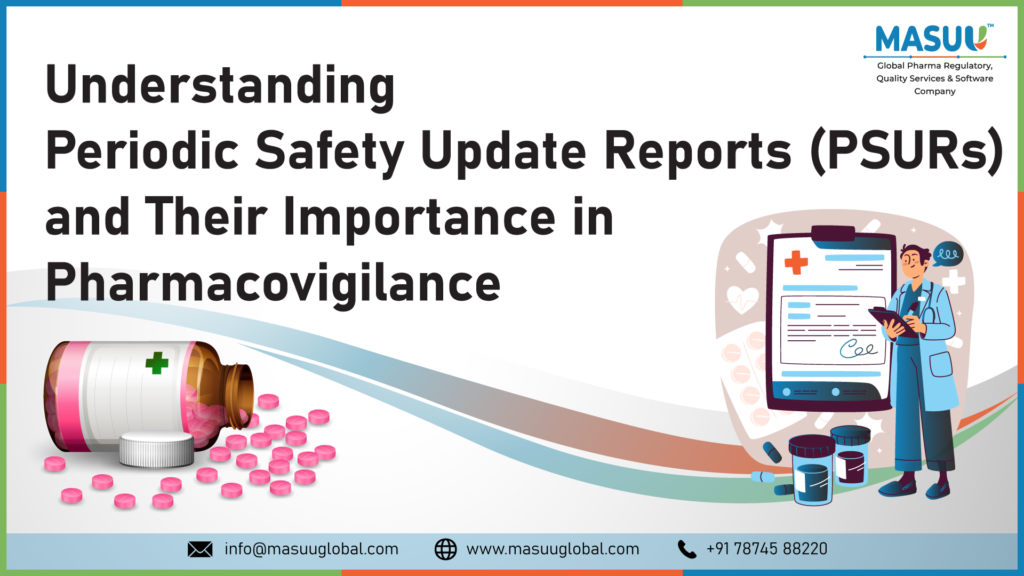In the world of pharmaceutical regulation, ensuring the ongoing safety of medicinal products post-market approval is just as crucial as during their development. One of the most important documents used to monitor and evaluate the safety of a drug after it hits the market is the Periodic Safety Update Report (PSUR).
But what exactly is a PSUR, and why is it so significant? Let’s dive into the details.

A Periodic Safety Update Report (PSUR) is a pharmacovigilance document that provides a comprehensive evaluation of the risk-benefit balance of a medicinal product. It’s submitted by marketing authorization holders at specified time points during the post-authorization phase of the product’s life cycle.
The Objective of a PSURThe primary objective of a PSUR is to present a concise, critical analysis of the safety profile of a medicinal product. This includes integrating new safety information and providing a detailed review of the cumulative data on the risks and benefits of the product.
Key Components of a PSURA PSUR includes a wide range of sections to comprehensively assess a product’s safety. Below are the key sections that make up a typical PSUR:
- Introduction – Overview of the medicinal product and the report’s scope.
- Worldwide Marketing Authorization Status – A snapshot of where the product is authorized and marketed.
- Safety Actions – Details of actions taken during the reporting interval due to safety concerns.
- Cumulative Exposure Data – Summary of clinical trial and post-marketing exposure.
- Summary Tabulations – Tabulations of adverse events, both from clinical trials and real-world data.
- Signal Evaluation – Review of new, ongoing, or closed safety signals.
- Benefit-Risk Analysis – A thorough evaluation of the product’s benefits versus its risks, including the context of medical need and available alternatives.
Marketing authorization holders are required to submit PSURs at regular intervals based on the approval date and the type of product. Here’s a breakdown:
- Initial 6 months post-authorization, even if the product is not yet marketed.
- First 2 years after marketing, PSUR submissions are required every 6 months.
- Years 3-4, the frequency reduces to annual submissions.
- After 4 years, PSURs are submitted every 3 years.
The timely submission of PSURs is critical. Marketing authorization holders are generally required to submit PSURs:
- Within 70 calendar days for reports covering up to 12 months.
- Within 90 calendar days for reports covering more than 12 months.
- For ad-hoc PSURs requested by competent authorities, the timeline is typically within 90 calendar days.
PSURs play a critical role in pharmacovigilance, helping regulators, healthcare providers, and pharmaceutical companies ensure that products on the market are safe for public use. By continuously assessing the risk-benefit balance of a product, PSURs help identify any emerging safety concerns and recommend appropriate risk management actions.
How Masuu Global Can AssistAt Masuu Global, we understand the complexities involved in preparing, submitting, and evaluating PSURs. Our team of experts provides end-to-end support in the creation and submission of these reports, ensuring compliance with regulatory standards and timelines.
If you are looking for expert assistance with your PSUR needs, don’t hesitate to contact us today to learn how we can assist you in maintaining the highest safety standards for your medicinal products.
